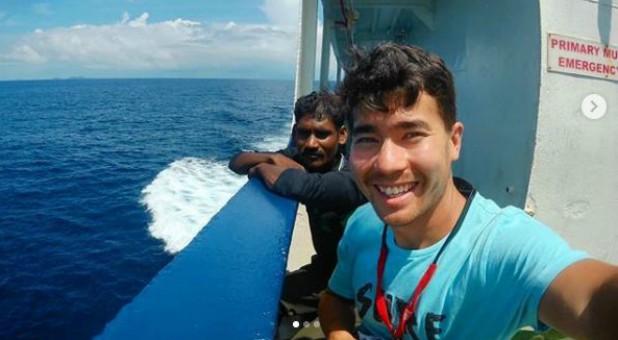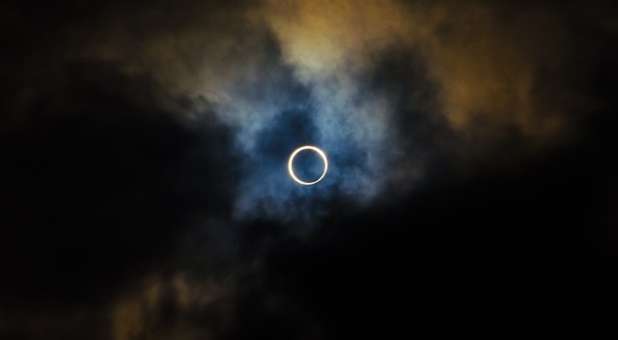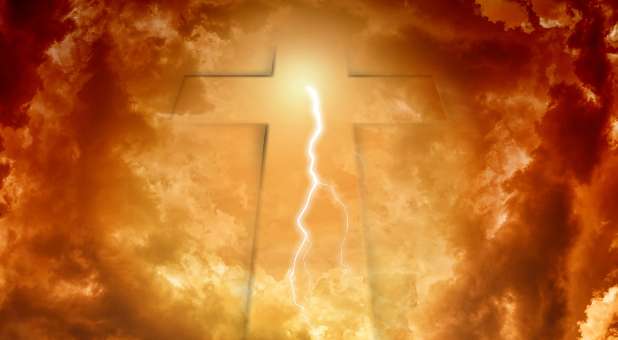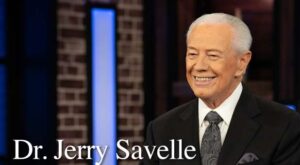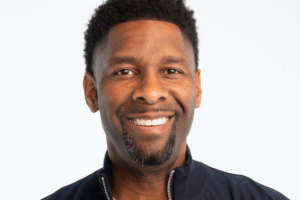The story of John Allen Chau, who on Nov. 17 was killed by the Sentinelese tribal people on North Sentinel Island, has gone global. There is a lot of misinformation and speculation about John and the Sentinelese people. There is a raging debate about whether the Sentinelese tribe should be left alone and whether John was a martyr or a criminal.
I have been surprised at how much anger there is worldwide against Christians, Christianity and missionaries. We have received some of the most vile and insensitive comments that fall into two categories. These two categories which include: 1) those who believe indigenous people should be left alone and have no contact with the outside world; and 2) those who hate (and I mean hate with intensity) Christians, especially Jesus Christ. Some people in this second category are secularists, and some identify as witches. Some of the people in the first category are also in the second category and vice versa.
Then there is a third category that includes mixed reactions. These people generally identify themselves as Christians or those who use religious language or cite Scripture. Some express support, but others express opinions that: 1) John followed his own will and not the will of God, and 2) John should have had a long-term plan and proper training; 3) John disobeyed the law by going to North Sentinel Island and 4) John was not a martyr because the people did not speak his language and thus could not have killed him because of his faith.
I want to address some of the misinformation and rebut some of the wrong thinking.
Covenant Journey and John Chau
John was an alumnus of Covenant Journey from August 2015. Covenant Journey is a ministry that provides a life-changing 10-day experience in Israel for Christian college-age students who demonstrate leadership skills. The mission of Covenant Journey is to strengthen the Christian faith of college-age students and introduce them to Israel through an immersive program in the Holy Land. The Covenant Journey experience in Israel is not a missionary program. It is focused solely on young Christian leaders to enhance their Christian faith. Students from more than 300 colleges and universities have participated in Covenant Journey. Those who are selected pay only $500, and the remainder of the costs are underwritten.
John Chau and Missions
Since high school, John shared with his family and some friends that he wanted to go to North Sentinel Island. The reason was his desire to share the love of Jesus with one of the last unreached people groups in the world, the Sentinelese. By age 23, when John went to Israel with Covenant Journey, he had already gone on several mission trips—twice to South Africa and once to India. John went on many mission trips in the U.S. and abroad during his studies at Oral Roberts University.
In 2016, John returned to India. In 2017, John underwent extensive missions training with All Nations, a mission-sending organization. Following his training, John returned to India. North Sentinel is an island under the jurisdiction of India.
In addition to John’s foreign missions, he was a skilled wilderness guide who led scores of people on hiking and camping adventures throughout the Pacific Northwest. He was trained as an EMT, survivalist and mountain climber, and had a great deal of experience in extreme climates. He was a certified scuba diver and coached soccer around the world. His training and survivalist experience went far beyond the typical missionary training.
Should the Sentinelese People Be Left Alone?
I have no illusions that the debate over indigenous people groups will be resolved. I only want to share some observations. The general objection is that indigenous people should have no contact with the outside world and that any contact could destroy the people by introducing disease. Another objection is that Christianity is harmful as a general proposition.
Much of the discussion about indigenous people in general and the Sentinelese in particular seems to assume these people are subhuman. They are often viewed as an historic, untouched people group who would be better off left to their ancient ways.
But every person, indigenous or not, is created in the image of God. Just like those of us in developed countries, these people think, reason, have hopes and dreams, fears and anxieties, and are curious and creative. They love and laugh. They have families and friends.
In his journal, John wondered where the elderly were on the island. He only saw young people of short stature. Since the Sentinelese are so isolated, we do not know the answer to John’s question. Maybe their life expectancy is so short there are no elderly. Maybe the elderly are kept in isolation. Maybe the tribe kills them when they are no longer productive. Maybe the Sentinelese who killed John and who have opposed outsiders (even humanitarian relief following an earthquake and tsunami) are similar to rogue gangs we have in parts of the U.S. How can we assume that the people who appear on the beach with bows and arrows and spears represent the entire tribe?
With such lack of information about the Sentinelese, how can we assume the entire tribe want no contact with the outside world? How can we assume the island is free of domestic, child or elder abuse? How can we assume that there are no people on the island who long to leave and explore a new life but who are forced to stay? We have no way of knowing, and therefore we cannot flatly assume that isolation is the best course of action for these people.
Without proper medical treatment, a young child who falls from a tree and suffers a severe broken leg or arm will likely live a difficult, if not short life, even by the Sentinelese life expectancy. Minor sicknesses in developed countries can be treated by proper medicine. But, minor sicknesses for the Sentinelese can be fatal. How can we assume the Sentinelese would rather watch their children die than have modern medicine save them? Few people would volunteer to give up all medical treatments in exchange for isolation. Who are we to deny the Sentinelese the choice of their future? George Washington died a painful death from a throat infection that could have been treated with modern medicine. How many Sentinelese die painful deaths because they lack modern medicine? Who are we to say they are better off left alone?
Despite their isolation, the Sentinelese no doubt get cut, sometimes severely. Even minor cuts without proper medical care can become infected. A broken jaw, tooth or toothache can cause excruciating pain. These, and a host of other medical conditions and physical injuries, can result in prolonged disability or painful death. Are the Sentinelese better off left to suffer what otherwise could be an easy cure or treatment by modern medical standards? If you think so, then on what basis can you make that decision? Certainly it is not because of the known wishes of the Sentinelese people. We must not be so arrogant or so cold to make these life-and-death decisions for them. The children born on North Sentinel have no choice in their destiny. How can we assume they do not want better if they knew an entirely different future awaits just beyond the horizon?
If the Sentinelese are doing so well without contact with the outside world, then why is it estimated that as few as 50 people inhabit the island? The only way to have so few people without migration of the tribe leaving the island is due to a very short life expectancy. Life expectancy is shortened by lack of clean water, lack of good nutrition and lack of proper medical care. What if the Sentinelese kill other tribe members? We know they do kill other human beings. What prevents them from killing each other? We simply do not know the answers to these questions, and it is problematic to assume we do and then make decisions about the Sentinelese that affect their well-being.
To the objection of whether Christianity is harmful, I neither have the space, nor is it my purpose in this short space, to thoroughly address this question. The weight of history, however, supports the conclusion that Christianity has greatly benefited society. At the time of Jesus, women in all cultures were treated with disdain. Women were often separated from men. In the Greek, Roman and Jewish cultures, women were often considered unclean because of their menstrual cycles. The Roman author, naturalist, and naval and army commander, Pliny the Elder, penned writings that today would be considered outrageously insulting toward women. And this was not just his personal opinion; it was a widely held bias.
Against the cultural perception of women, Jesus allowed the woman who had a continual menstrual blood flow to touch him, and he healed her. Women were part of the inner circle of Jesus. He spoke with the Samaritan woman at the well, and the first eyewitnesses to His resurrection were women.
William Wilberforce gave his life to share the gospel of Jesus throughout the British Empire, which included India, to abolish slavery and reform manners. Before the reformation of manners, wives were burned alive on an open pyre when their husbands died. Under sustained efforts by Christian missionary William Carey (1761-1834), the Hindu practice of burning alive the surviving wife in India, known as sati or suttee, was banned.
Should Christians have remained silent and allowed the inhumane practice of sati to continue so as not to interfere with indigenous practices? I think not.
Was John a Lawbreaker?
In the 1990s, after tourism to the Andaman and Nicobar Islands increased, the Indian government imposed travel restrictions, which required visitors to obtain permits. In August 2018, the Indian government lifted the Restricted Area Permit (RAP) to foreigners on 29 islands in Andaman, including North Sentinel Island. According to the India Times, “Lifting of RAP means that now people from other countries can also visit … North Sentinel Island … without any permit.” The article also states that to visit reserved forests, wildlife sanctuaries and tribal reserves, separate approval is still required. New Deli TV reports that the RAP for North Sentinel and 28 other islands was lifted and remains lifted until Dec. 31, 2022. “The lifting of the RAP means foreigners can go to the island without permission from the government, ….”
Whether or not some form of permit is or is no longer required, foreign missionaries have and still do risk their lives to share Jesus in sensitive regions. More Christians at the present are killed worldwide than at any time in history. Around the world, Christians work in foreign lands where it is illegal to proselytize Christianity or to convert to Christianity. And today, this includes parts of India, particularly in some of the northern parts heavily populated by Hindus and Muslims. Anti-conversion laws are in effect in eight of the 29 Indian states. A few weeks ago, an Indian pastor visited with me and shared how Christian missionaries are often killed in India.
Jim Elliot, at age 28, was one of five missionaries killed during Operation Auca, while attempting to evangelize the Huaorani people of Ecuador. Nate Saint, a pilot, was one of the missionaries killed along with Elliot. Nate’s son, Steve, who was born in Ecuador, continued to befriend the tribal people who wanted no contact with the outside world. Steve was eventually received by the tribe that killed his father. He baptized Kimo and Dyuwi, who were directly involved in his father’s death. In 2005, Steve published his memoirs in the book, End of the Spear, which was made into a movie by the same name.
Throughout millennia of human history, all too often, the laws of the land prohibit certain religious practices or conversion to a minority religion. The three Hebrews (Shadrach, Meshach and Abednego) knew it was illegal to not bow down to Nebuchadnezzar, the Babylonian king. But they chose to obey God and were thrown into a fiery furnace, where they were miraculously saved (Dan. 3:1-30). The prophet Daniel knew it was illegal to pray to God for 30 days, but he opened his window and prayed so he could be heard. He, too, was sentenced to death—in the lion’s den—but miraculously survived (Dan. 6:1-28).
Jesus knew the ruling religious class did not want to hear his message, but he proclaimed it notwithstanding their objections. For this, he was crucified. The apostle Peter was released from prison on the condition that he no longer preach in the name of Jesus, but he responded, “We must obey God rather than men.” (Acts 5:29b).
The last directive of Jesus is what we call the Great Commission. After saying that all authority in heaven and earth has been given to him, he says, “Go therefore and make disciples of all nations … teaching them to observe all things I have commanded you” (Matt. 28:19-20a).
One objection by some people is that John should have had a long-term plan and used better judgment. It is astounding that anyone who does not know John or the particular facts could jump to such a conclusion. From what we do know, John did have a long-term plan that began 10 years ago while he was still in high school. He trained for years to be a missionary. He went on multiple mission trips. Before this year, he went to India in 2015 and 2016, including to the Andaman Islands. He received extensive missionary training in 2017, according to All Nations. He was a trained EMT and knew how to survive in hostile climates and conditions. He carried with him an extensive medical kit that, among other things, included a hemostat to pinch arteries, a chest seal in case of a puncture and dental forceps to remove arrows. He remained in isolation for 11 days prior to visiting North Sentinel so that he would not be exposed to sickness.
Another objection raised by some self-identified Christians is that John was operating in his own will, not the will of God. The audacity of someone to make such a judgment without knowing John is astounding. Some will point to the fact that John was shot by an arrow on Thursday, November 15. The Bible he held over his chest stopped the arrow from penetrating his body. This warning, some say, should have been enough to make John retreat.
There is no question that John knew he was in danger. When the apostle Paul visited the city of Tyre, some early disciples received a warning: “They told Paul through the Spirit not to go up to Jerusalem” (Acts 21:4). Shortly thereafter, Paul went to Caesarea (Maritima), where a prophet named Agabus came down from Judea. He took Paul’s belt and bound his own feet and hands, and said, “The Holy Spirit says, ‘In this manner the Jews at Jerusalem shall bind the man who owns this belt and deliver him into the hands of the Gentiles'” (Acts 21:11). Paul responded by saying, “I am ready not only to be imprisoned, but also to die in Jerusalem for the name of the Lord Jesus” (Acts 21:13).
Paul did go to Jerusalem and was arrested. A plot to kill him resulted in his returning to Caesarea, where he later appealed his case to Caesar. In Rome, he spent his final days under house arrest preaching the gospel of Jesus. In the book of 1 Clement (A.D. 95-96), it is recorded that Paul was martyred, probably after the great fire in Rome in July 64 or the last year of Nero’s reign in 68.
Was John a Martyr?
I have and will continue to call John Chau a martyr. The definition of a martyr is a person who is killed because of their faith or sacrifices something of great value and especially life because of principle. John meets every definition of a martyr.
Some say John could not have been a martyr because the Sentinelese did not kill him because of his Christian faith. Like the unfortunate fishermen who were captured and killed by the Sentinelese when their boat drifted too close to North Sentinel Island in 2006, the Sentinelese would have killed John whether or not he was Christian. That may be true, but what is important is not what the Sentinelese knew, but what drove John to North Sentinel Island. He was there for one reason only: to share the love of Jesus and the salvation He offers to this last unreached people group.
Historians and those who knew Dietrich Bonhoeffer rightly refer to him as a martyr. But, Bonhoeffer was not killed because he shared Jesus with Hitler or even the Nazis per se. He was killed because his Christian faith compelled him to resist the Nazi regime. It makes no difference whether the Sentinelese subjectively knew John was a Christian. What matters is John was on North Sentinel Island to share Jesus because his Christian faith compelled to do so. Granted, if John was killed on a mere sightseeing adventure, he would not be a martyr. He was a martyr because he was on the island to witness to the Sentinelese.
As some have said, John did not have a “martyr complex” or a death wish. He wrote in his journal the day before he was killed these words, “God, I don’t want to die. “Who will take my place if I do? Oh God, I miss my parents, …”
Hours before he was killed, John wrote to his mom and dad, saying, “You guys might think I’m crazy in all this but I think it’s worth it to declare Jesus to these people.” And, like Stephen when he was being stoned to death asked God not to hold this sin against his killers (Acts 7:54-60), John wrote, “Please do not be angry at them or at God if I get killed—rather please live your lives in obedience to whatever He has called you to and I’ll see you again when you pass through the veil.”
John went on to write, “This is not a pointless thing—the eternal lives of this tribe is at hand and I can’t wait to see them around the throne of God worshipping in their own language as Revelation 7:9-10 states.”
John urges in his journal, “I pray that you will never love anything in this world more than you love Christ.” Compelled by this love and his desire to share Jesus with the Sentinelese, John went to North Sentinel Island, and there, he paid the ultimate sacrifice.
See an error in this article?
To contact us or to submit an article


